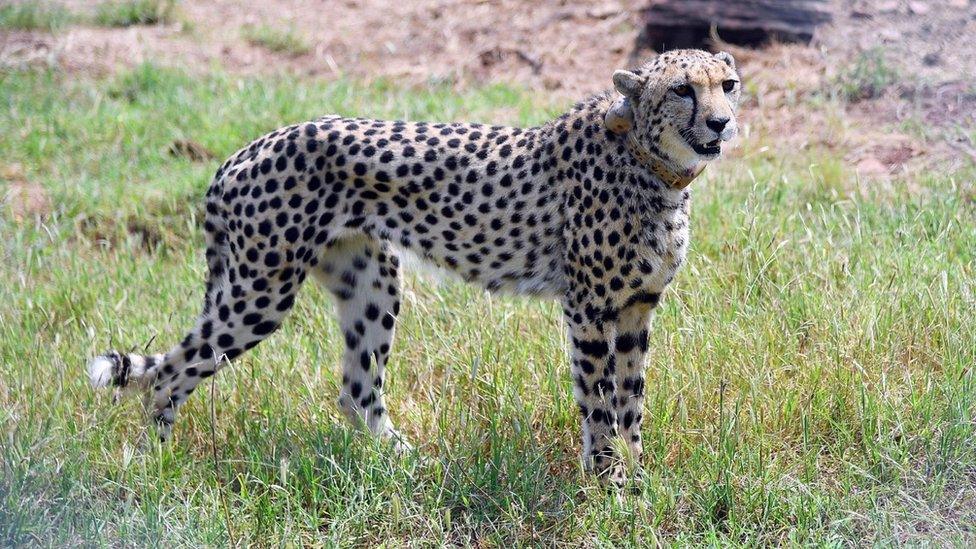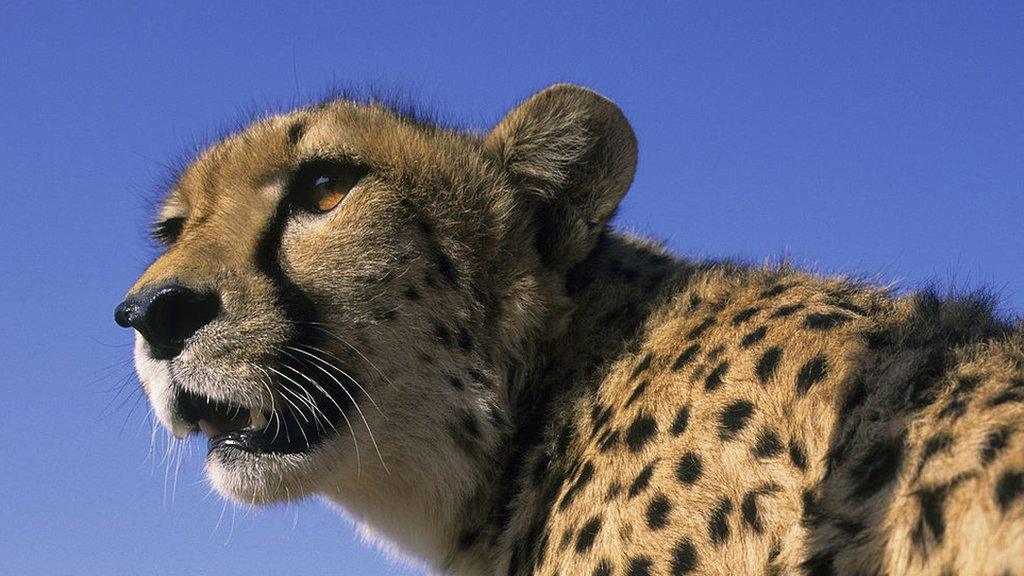First cheetah cubs born in India since extinction 70 years ago
- Published
Watch: Cheetah cubs snuggle up after rare birth in India
India has welcomed the birth of four cheetah cubs - more than 70 years after the animals were declared officially extinct there.
India's environment minister announced the good news, calling it a "momentous event".
The country has been trying to reintroduce the big cats for decades, and last year brought eight cheetahs over from Namibia as part of the plan.
Another 12 cheetahs were brought to India from South Africa last month.
The four cubs were born in Kuno National Park wildlife sanctuary to one of the females that came from Namibia last September.
Announcing the news on Twitter,, external Environment Minister Bhupender Yadav said he was "delighted".
"I congratulate the entire team of Project Cheetah for their relentless efforts in bringing back cheetahs to India and for their efforts in correcting an ecological wrong done in the past," he said.
Prime Minister Narendra Modi also welcomed the "wonderful news".
The cubs were believed to have been born five days ago, but they were spotted by officials on Wednesday, the Press Trust of India reported.
A park official told the news agency that the mother Siyaya and the cubs were fine and healthy.
But the announcement of the new cubs comes just two days after one of the other eight Namibian cheetahs died at the Kuno National Park due to kidney failure.
When they were transported to India last year, it was the first time a large carnivore had been moved from one continent to another and reintroduced in the wild.
Cheetahs - the world's fastest land animal - became officially extinct in India in 1952, after years of dwindling numbers because of hunting, a loss of habitat and not having enough prey to eat.
The vast majority of the 7,000 cheetahs in the world are now found in Africa - in South Africa, Namibia and Botswana.
The Asiatic cheetah is critically endangered and now only found in Iran, where there are thought to be about 50 left.
The cheetah is listed globally as "vulnerable" on the International Union for the Conservation of Nature Red List of Threatened Species.
It can race across grasslands at speeds touching 70 mph (112km/h) to capture prey.
Watch: Curious cheetah joins safari group in Tanzania
Related topics
- Published17 September 2022

- Published3 August 2022
- Published20 July 2022
